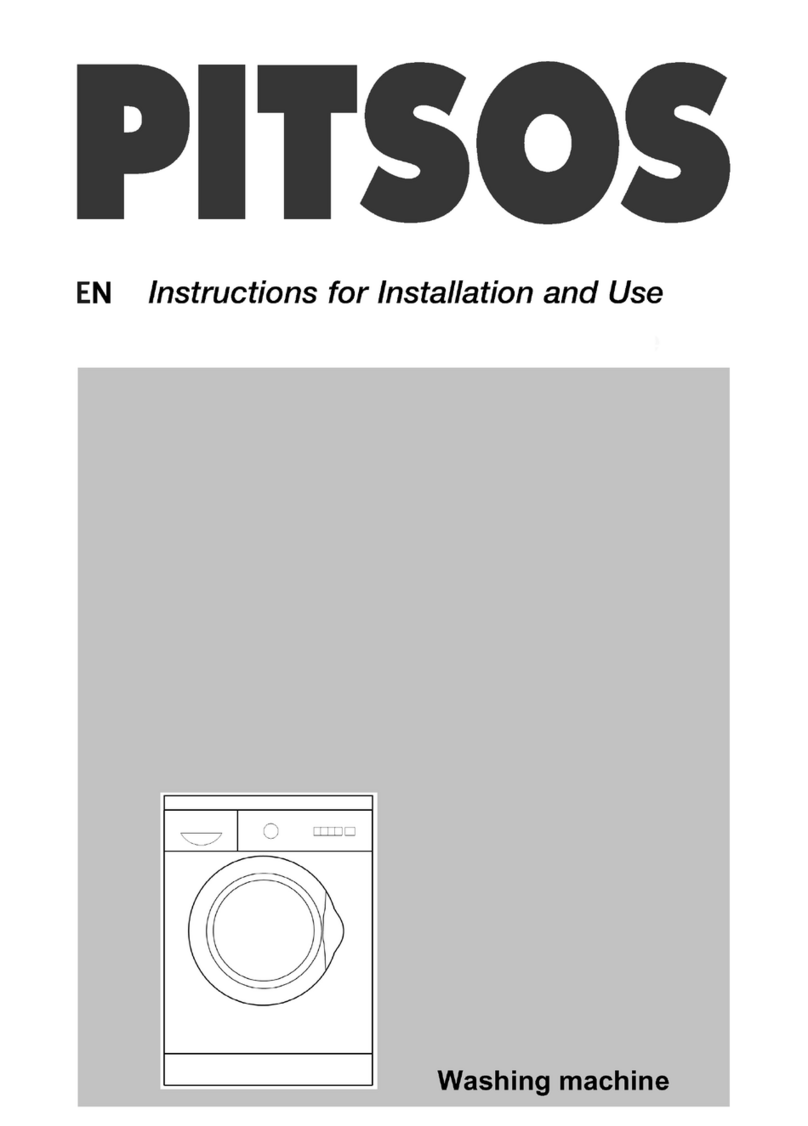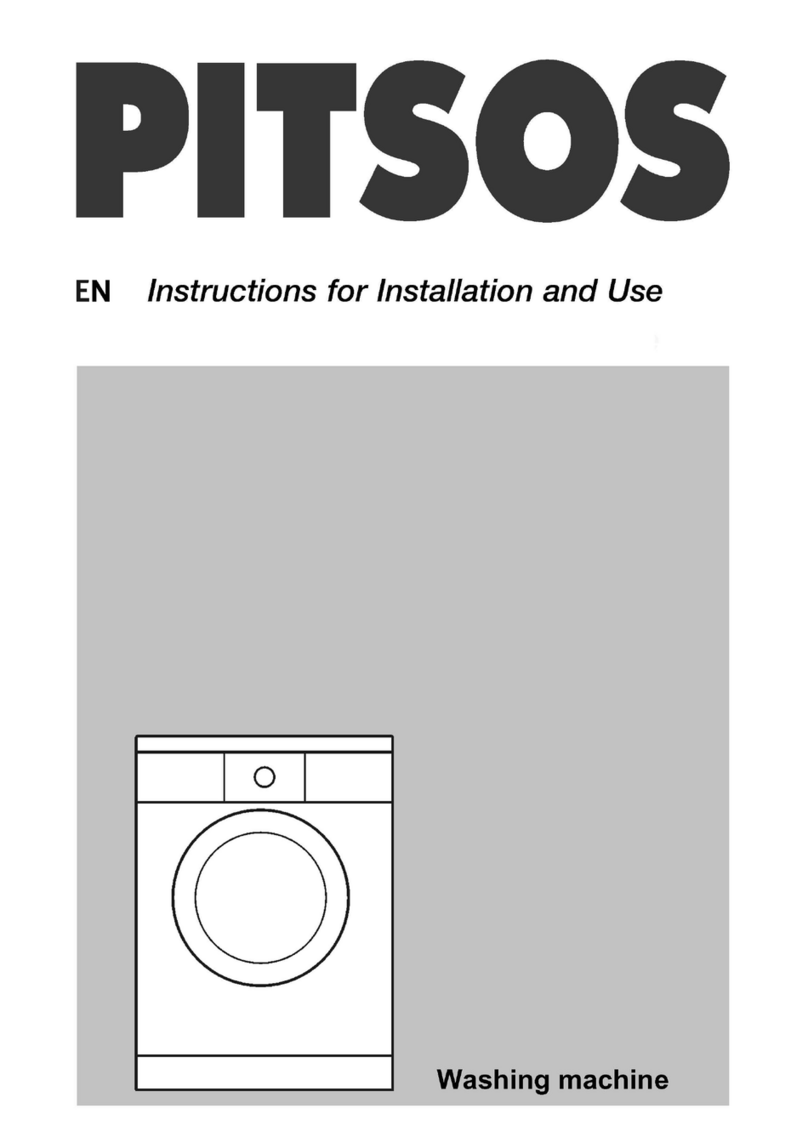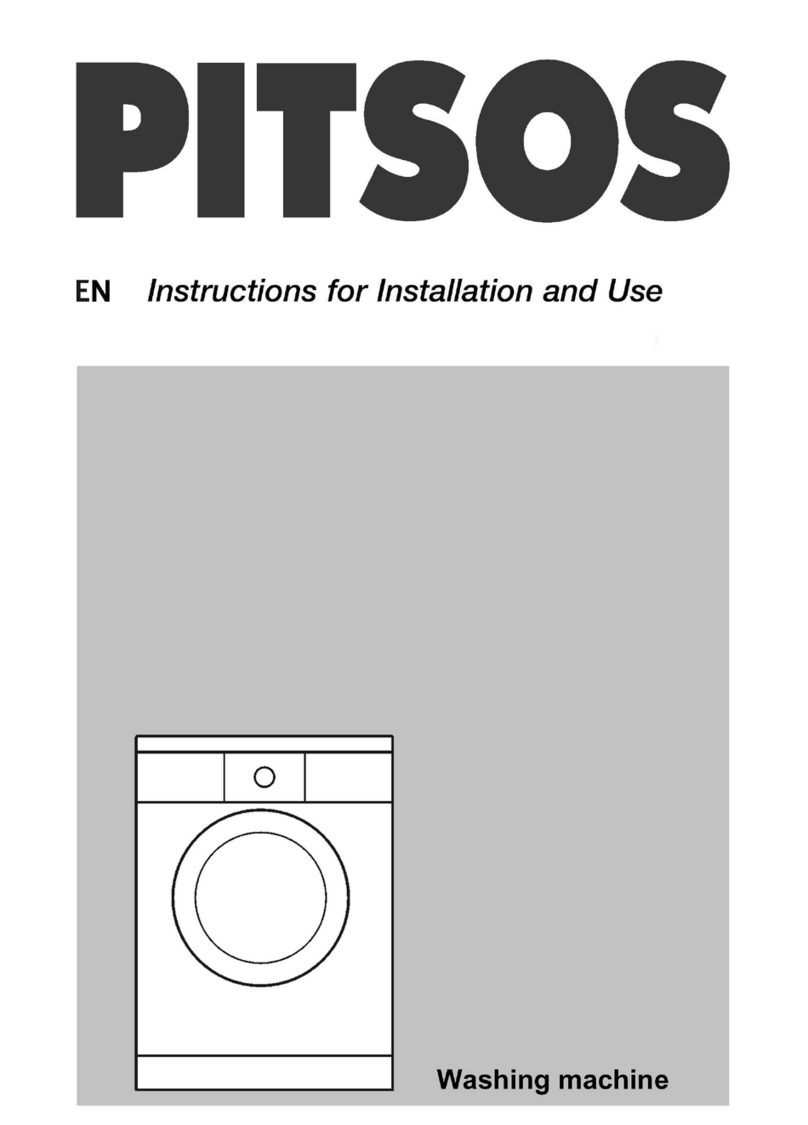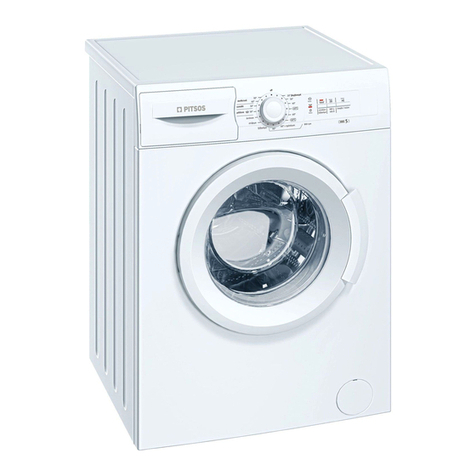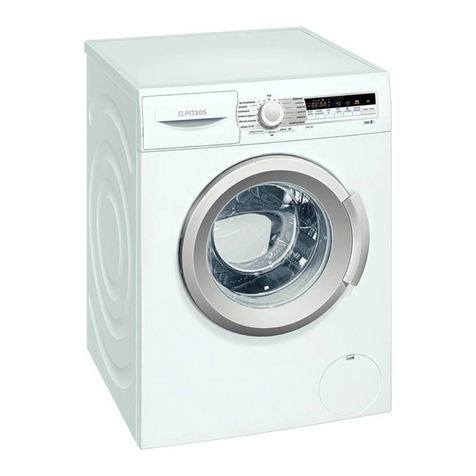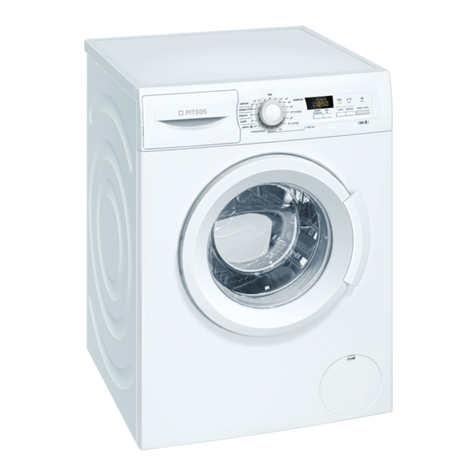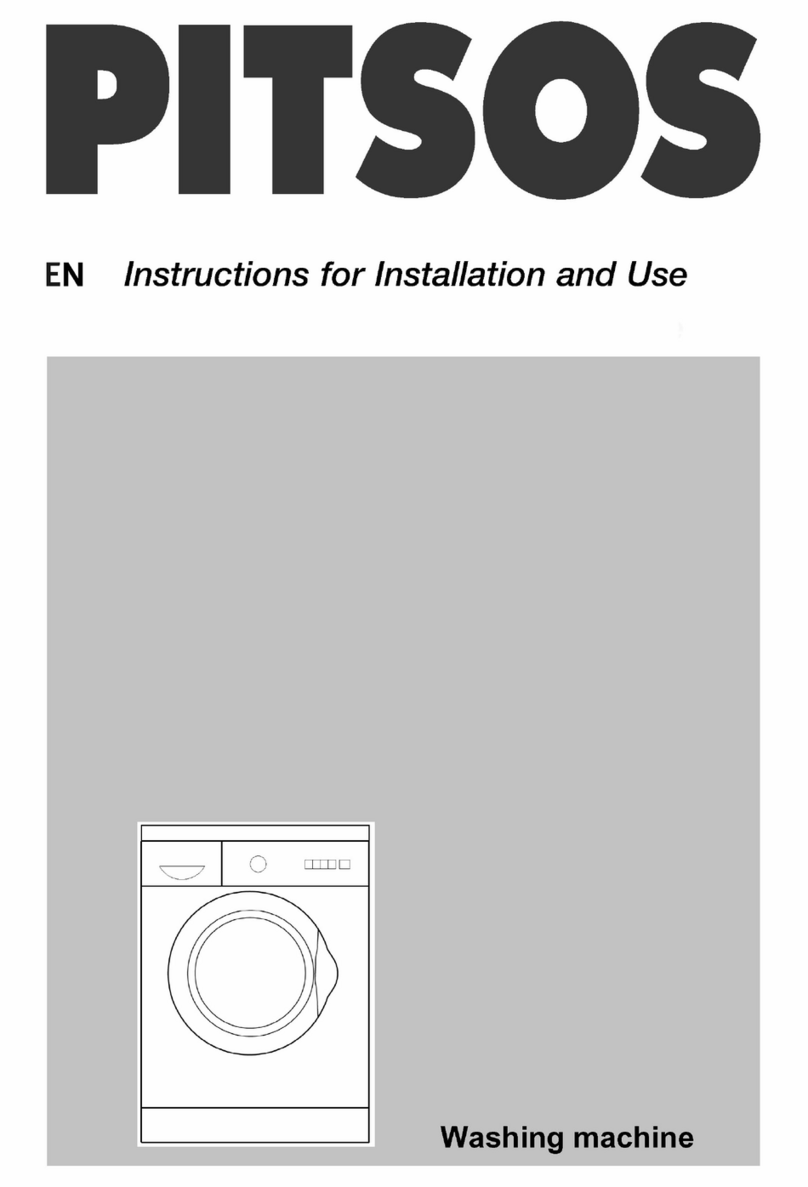1 2 3 4 5 6
End of programme when ...
... the status indicator c(Spin) - bü(End) flashes.
Interrupting the programme
Programmes at high temperatures:
– Cool washing: Select ƏžƃƄƂƌƍƂ(Rinse).
– Select žƎƂƑƏƈ(Start).
Programmes at lower temperatures:
– Select ƓƔƝƘƊƍƐc(Spin) or ŽƎƔƌƈƓƈ(Drain).
– Select žƎƂƑƏƈ(Start).
Changing the programme, if ...
... you have selected the wrong programme by mistake:
– Reselect the programme.
– Select žƎƂƑƏƈ(Start). The new programme starts from
the beginning.
Correct installation according to the
separate Installation instructions.
Checking the machine
– Never use a damaged machine.
– Inform the after-sales service.
Connecting the mains
plug
Make sure your hands are dry.
Take hold of the plug only.
Turning the tap on
Compartment II: Detergent for the main wash, water softener,
bleach, stain remover
Sorting and loading laundry
Follow the manufacturer's care information.
According to the information on the care labels.
According to type, colour, soiling and temperature.
Do not exceed the maximum load apage 7.
Observe the important information apage 6.
Insert large and small items of laundry.
Close the washing machine door. Take care not to trap items of laundry
between the washing machine door and the rubber seal.
Add detergent and care products
Measure accordingly:
Amount of laundry, soiling, water hardness (ask your water supply
company) and manufacturer's instructions.
Pour liquid detergent into the appropriate dispenser and place in the drum.
Your washing machine
Congratulations äYou have opted for a modern, high-quality
domestic appliance manufactured by Pitsos. This washing machine
is distinguished by its economical water and energy consumption.
Each machine that leaves our factory has been inspected thoroughly
to ensure that it functions properly and is in perfect condition.
For further information and a selection of our products go to our web
site: www.pitsos.gr
You can find the contact details for your nearest after-sales service
here or in the after-sales service directory
GR 18 182
Environmentally friendly waste disposal All packaging must be disposed of in accordance with
environmental guidelines.
This appliance is labelled in accordance with European Directive
2012/19/EU concerning used electrical and electronic appliances
(waste electrical and electronic equipment - WEEE).
The guideline determines the framework for the return and recycling
of used appliances as applicable throughout the EU.
Intended use
Contents Page
ʋIntended use .......................................................................................1
ʋProgrammes .......................................................................................1
ʋSetting and adjusting the programme ...........................................3
ʋWashing ...........................................................................................3/4
ʋAfter washing ......................................................................................4
ʋIndividual settings ..............................................................................5
ʋImportant information ........................................................................6
ʋOverview of programmes ................................................................7
ʋSafety instructions ............................................................................. 8
ʋConsumption values ......................................................................... 8
ʋCare .....................................................................................................9
ʋInformation to indicator lights ..........................................................9
ʋMaintenance .................................................................................... 10
ʋWhat to do if... .................................................................................. 11
Environmental protection/Conservation tips
– Always fill the washing machine with a maximum amount of
laundry for the relevant programme.
– Wash normally soiled washing without a pre-wash (model-
dependent).
– The selectable temperatures apply to the care labels on the
textiles. The temperatures in the machine may deviate from this
so that you get the optimum mix of energy-saving and washing
results.
– Measure the detergent according to the manufacturer's
instructions and water hardness.
– If the laundry is then dried in the tumble dryer, select the spin
speed according to the instructions of the dryer manufacturer
(model-dependent).
Preparation Before washing for the first time
Wash once without any laundry apage 9.
Setting and adjusting programmes
Programme selector Start
Programme selector for
switching the machine on
and off and for selecting the
programme. Can be turned
in either direction.
Programmes
Detailed overview of programmes apage 7.
ƃƂƍƃƂƋƆƑŽ(Cottons) hard-wearing fabrics
ƃƂƍƃƂƋƆƑŽ+ ƑƜƌƕƓƈ(Cottons + Prewash)
hard-wearing fabrics,
prewash at 30 °C
ƣƒƗƘƖƠơƖ](Rinse) with subsequent spin cycle
ƧƨƱƬƞơƤc(Spin) laundry washed by hand
ƑƢƨƠƜƧƜ(Drain) the rinsing water
ƍŽƌƌƊƎƂ(Wool) hand/machine-washable textiles
ƆuƂƉſ(Delicates) delicate washable fabrics
ƓƕvƉƆƔƊƋŽ(Easy-Care) easy-care fabrics
Additional function aIndividual settings,
page 5.
Select
žƎƂƑƏƈ(Start)
Washing
1
2
Removing the washing
Open the washing machine door and remove the washing.
If ƂƑƂƍovſƎƆƑƜƝ(No spin) (without final spin) is
active: Turn the programme selector to ŽƎƔƌƈƓƈ(Drain)
or select the spin speed (model-dependent).
Select žƎƂƑƏƈ(Start).
– Remove any foreign objects - risk of rusting.
– Leave the washing machine door and detergent
drawer open so that any residual water can
evaporate.
Turning the tap off
Switching off
Turn the programme selector to stop (Off).
Washing
Detergent drawer with
compartments I,II,~
Washing machine
door
Compartment ~: Fabric softener, starch
Compartment I: Detergent for pre-wash (model-dependent)
ʋfor use in the household only,
ʋfor machine-washable fabrics and hand-washable wool
in detergent solution,
ʋto be operated with cold drinking water and commer-
cially available detergents and care products which are
suitable for use in washing machines.
.
– Do not leave children unattended near the
washing machine.
– The washing machine is not to be used by
children or persons not familiar with the
operating instructions.
– Keep pets away from the washing machine.
Dilute thick fabric softener and fabric conditioner with water.
This prevents blockages.
Individual settings
ʑAdditional functions aand overview of programmes, see page 7.
cƆƊƌžƐƎƏžƃyƂƌƍƂAdditional rinse cycle. For areas with very soft water or for further
improvement of the rinsing result.
cƂƑƂƍovſƎƆƑƜƝ(No spin)
Clothing remains immersed in the last rinse water.
ʑžƎƂƑƏƈ(Start)
For starting the programme.
Important information
Protecting the washing and the machine
– When determining the dosage of all washing powders, additives and cleaning agents, you
must follow the manufacturer's instructions.
– Empty pockets.
– Look out for metal items (paperclips, etc.).
– Wash delicates in a laundry bag (tights, curtains, underwired bras).
– Fasten zips, do up any buttons.
– Brush sand out of pockets and collars.
– Remove curtain fittings or place in the laundry bag.
Washing with varying degrees of soiling
Wash new items of clothing separately.
light Do not pre-wash.
If required, pretreat stains.
Select programme ƃƂƍƃƂƋƆƑŽ(Cottons) ~.
heavy Load less washing.
Select programme ƃƂƍƃƂƋƆƑŽ+ ƑƜƌƕƓƈ(Cottons + Prewash) 60 °C.
Starching Washing must not be treated with fabric softener
Starching is possible in all wash programmes if liquid starch is used. Pour the starch in
accordance with the manufacturer's instructions into fabric softener compartment ~(rinse first
if necessary).
Dyeing/bleaching
Dye should only be used in normal household quantities. Salt may damage stainless steel.
Always follow the dye manufacturer's instructions! Do not use the washing machine for
bleaching clothes!
Additional
function*
3
Drum
Control panel
Service flap for
detergent solution
pump
Status
indicators
(*spin speed depending on model)
start
1]wash
5rinse
spin
bend
Read these instructions and the separate
installation instructions before operating the
washing machine.
Observe the safety instructions on page 8.

